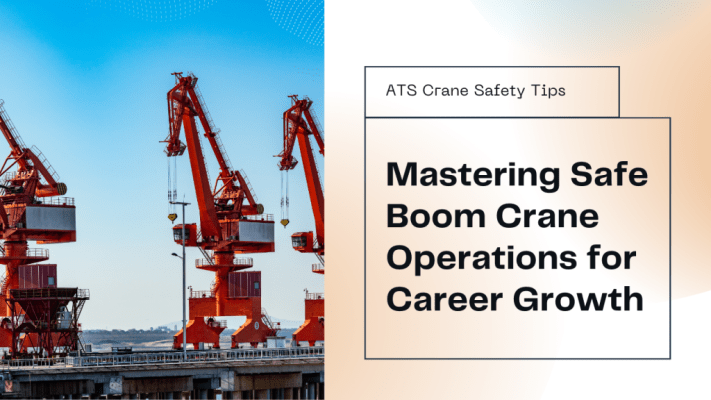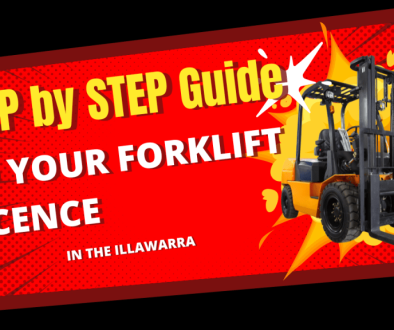Portal Boom Crane Licence – Safe Operation & Career Growth
Operating a crane is no small feat; it’s a unique skill that requires both physical and mental preparedness. Portal Boom Cranes, mounted on a portal frame, stand tall and dominate many construction sites across Australia. However, mastering this complex machinery requires more than brute strength; it demands a solid understanding of safety protocols, meticulous planning, and a commitment to workplace health and safety.
In recent years, Australia has placed a strong emphasis on crane operator safety. According to recent data from Safe Work Australia, crane-related incidents have seen a slight reduction, thanks to stringent safety standards and specialized training programs like the TLILIC0019 Licence to Operate a Portal Boom Crane. This course is structured to equip aspiring operators with both the technical know-how and safety insights essential for handling these powerful machines.
Whether you’re stepping into the industry for the first time or looking to expand your credentials, obtaining this licence opens doors to new opportunities. Let’s dive into what this course covers and why it’s critical for a safe, rewarding career in crane operation.
Why Workplace Health & Safety (WHS) Is the Backbone of Crane Operation
The Essential Role of WHS in Crane Operation
When working with cranes, safety is non-negotiable. The Australian workplace health and safety (WHS) legislation, particularly in construction and heavy machinery industries, is designed to prevent accidents, injuries, and fatalities on-site. Crane operators are particularly vulnerable to hazards that can lead to severe consequences if not handled correctly. The TLILIC0019 course places a strong emphasis on WHS, helping trainees understand these risks and learn how to minimise them.
Key Safety Regulations Every Operator Should Know
- Safe Work Australia Standards: Safe Work Australia outlines specific safety guidelines for crane operations, including routine inspections and emergency protocols.
- State-Specific Regulations: Different Australian states have additional safety requirements. For example, Victoria requires thorough risk assessments specific to heavy equipment operation.
- Personal Protective Equipment (PPE): Operators are required to wear PPE such as helmets, gloves, and safety glasses at all times to prevent injuries.
Practical Application of WHS in Crane Operation
The course covers real-life scenarios and safety drills, ensuring operators understand how to apply WHS regulations on-site. Trainees will engage in mock drills to prepare for potential emergency situations, such as unexpected equipment malfunction or extreme weather conditions. Learning to anticipate and respond to these risks is a critical aspect of the TLILIC0019 course.
Identifying and Managing Hazards – Staying Proactive Understanding Common Hazards in Crane Operations
One of the core skills this course teaches is the ability to identify and manage hazards proactively. Hazards on construction sites can range from equipment malfunctions to unstable loads and challenging weather conditions.
Key Hazards and How to Mitigate Them
- Weather Conditions: Operating in high winds or heavy rain can affect stability. Operators learn to assess weather reports and pause operations when conditions are unsafe.
- Structural Weaknesses in Load: Loads that appear solid may have structural flaws. Operators are trained to assess loads for stability, minimising the risk of load shifts.
- Human Error: The course emphasises teamwork and communication to prevent human error, which remains one of the primary causes of accidents.
Hazard Identification Techniques
The TLILIC0019 course introduces practical tools such as checklists and risk assessment forms. These tools guide operators through identifying potential risks before operations begin, promoting a culture of safety and vigilance.
Planning and Preparing for Crane Operations; The Key to Efficiency
Site Assessment and Setup
Planning is essential for any crane operation. A thorough site assessment is the first step in ensuring that operations will run smoothly and safely. The TLILIC0019 course covers:
- Evaluating Site Layout: Determining the best location for the crane, taking into account potential obstacles like buildings, power lines, or uneven terrain.
- Setting Up Safe Zones: Operators are taught to establish exclusion zones where only authorised personnel can enter during crane operation.
Load Management and Equipment Inspection
Successful crane operation hinges on understanding load management principles and maintaining equipment. Operators learn to calculate load weight, balance, and distribution to ensure safe handling and transport.
Equipment inspection is equally crucial. Each component of the crane undergoes inspection before use. Trainees learn how to check for signs of wear or damage, ensuring the crane is fully operational before lifting any load.
Operating Procedures and Controls; Mastering the Machinery
Step-by-Step Guide to Safe Operation
Operating a Portal Boom Crane requires precision and focus. The course breaks down complex tasks into manageable steps:
- Engaging the Controls: Understanding each control lever and button, and knowing how to execute movements smoothly.
- Lifting and Lowering Loads: Techniques to avoid sudden movements that could destabilise the load or crane.
- Navigating the Site Safely: Operators learn how to transport loads without disrupting other site activities, maintaining a balance between efficiency and safety.
Emergency Procedures and Troubleshooting
Even with careful planning, issues can arise. The TLILIC0019 course prepares trainees for unexpected scenarios, including:
- Emergency Stop Protocol: Operators are trained to halt operations immediately if a safety risk arises.
- Troubleshooting Equipment Malfunctions: Basic troubleshooting skills are taught, enabling operators to address minor issues or call for technical support when necessary.
The course emphasises that safety is about constant awareness. By the end of this module, operators feel confident in managing their equipment and surroundings, knowing when to proceed and when to halt operations for safety.
Practical Training and Skill Application; Hands-On Experience
Hands-On Exercises and Real-World Scenarios
This course provides ample opportunities for practical application. Participants get hands-on experience with the equipment, moving beyond theory to real-world practice. Some activities include:
- Load Lifting and Transport Drills: Operators practice handling various load weights and dimensions to build confidence and adaptability.
- Simulated Site Navigation: By working in controlled environments, trainees learn to navigate sites with diverse obstacles and constraints.
Building Confidence Through Repetition
Confidence is key in crane operation, and the TLILIC0019 course promotes it through repetition. With multiple practice sessions and guidance from experienced instructors, trainees develop a strong operational foundation.
Final Assessment and Licensing Process; Your Pathway to Certification
Understanding the TLILIC0019 Licensing Process
The licensing process for TLILIC0019 Licence to Operate a Portal Boom Crane is rigorous to ensure only competent individuals receive certification. The final assessment consists of:
- Written Examination: Testing knowledge of safety regulations, hazard identification, and operational procedures.
- Practical Demonstration: Trainees are evaluated on their ability to operate the crane safely and efficiently in a controlled setting.
Post-Certification Opportunities
Upon obtaining this licence, individuals are qualified to operate Portal Boom Cranes on construction sites across Australia. Licensed operators are in high demand, especially as the Australian construction sector experiences steady growth.
Career Pathways with a Portal Boom Crane Licence
Expanding Your Career Options
A licence to operate a Portal Boom Crane opens doors to various career opportunities in the construction and logistics industries. Licensed operators often find roles in:
- Large-Scale Construction Projects: Including commercial and residential developments where cranes are essential.
- Infrastructure Development: Government projects, such as highways and bridges, that require skilled crane operators.
- Specialized Logistics: Companies involved in transport and logistics frequently hire crane operators for their loading and unloading needs.
The Future of Crane Operation in Australia
As Australia continues to invest in large-scale construction projects, demand for skilled crane operators is expected to grow. With a Portal Boom Crane Licence, operators position themselves as valuable assets to employers seeking reliable and skilled professionals.
“Achieve more, become more with Achieve Training Services”
To Your Success
Vic and The Team at Achieve
References
- Safe Work Australia. (n.d.). Construction industry snapshot. Retrieved from Safe Work Australia.
- Australian Government. (2022). Work Health and Safety Act. Retrieved from Legislation.gov.au.
- Australian Bureau of Statistics. (2023). Construction industry growth. Retrieved from ABS.gov.au.




